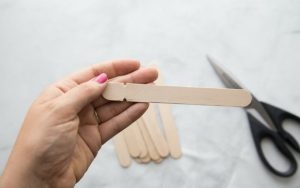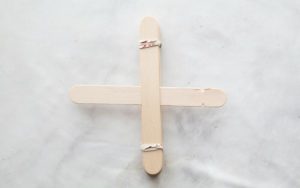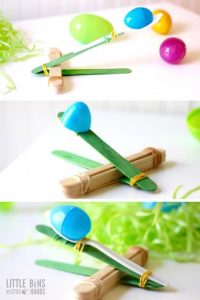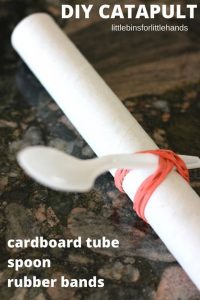
Making the Vase
- Cardboard or Card Stock
- Markers (we love Sharpies)
- Markers or Crayons for colouring
Using a black Sharpie draw a vase design. Be sure to include patterns like dots, zig-zags, stars or even flowers. Colour your vase to make it beautiful. Punch holes above the vase where you are going to add your flowers. Using green add stalks and leaves from the flower holes to the top of the vase.
Optional: Using a green marker or crayon to add stalks and leaves under the holes where the flowers will go down to the vase top. We decided not to, because the kids were so excited to go pick their flowers.
TIP: If you don’t have a hole punch or can’t reach the middle of your craft to punch holes, use a pencil to push through and make the holes.
Head Out Into Nature
Now it’s time to take your vase and head out into nature. Ensure your kids know not to take flowers from anyone’s gardens without permission!
Public parks often have lots of dandelions, clover and more, plus public trails will have gorgeous wild grown flowers, a little exploring will reveal a gorgeous array of flowers in your area!
You can also talk to your neighbours who might be avid gardeners. They may be willing to part with a few buds in the name of education. Or maybe you have your own flower garden to explore.
Take a look around and see what you can find and where would be the best place to find your flowers in your area.
Once you have found your flowers, have your child select the specific flowers they want to add to their vase. Using scissors carefully cut the flower ensuring that you leave a few inches of the stalk.
Next, have your child carefully place the flowers through the holes. If you wish, you can secure the flowers with a bit of tape if they are falling out.
Research
I love encouraging my kids to dig a little deeper. So once we were home with our homemade vases we did some research to learn more about the types of flowers we had and to learn a bit about those flowers. We have Dandelions which are very popular with bees, plus some Wild Roses. Then we took some flowers from the garden. A favourite was the Gerber Daisies!
The idea comes from Steampoweredfamily.com





